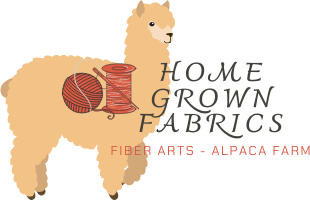From Alpaca to Yarn.......
Alpacas produce some of the most desirable fleece of all livestock; their wool is lightweight, durable, warm, and soft. Alpaca wool produces no lanolin and therefore is naturally hypoallergenic. Alpaca wool is not only highly insulating, but the wool is also naturally fire-resistant, as well as extremely water-resistant. The wool is even tear-resistant and eco-friendly; chances are you are supporting a local farm’s economy! The use of chemical agents to clean the wool is also unnecessary, making it far greener than sheep’s wool.
These amazing qualities come together, along with the beautiful array of colors, to produce one-of-a-kind wool, a highly valuable and unique yarn used to create all manner of project, textiles, and textile art.
Click through the tabs below to get a look at how the process works!
- Crias
- Shearing
- Skirting
- Tumbling
- Washing
- Picking/Carding/Combing
- Spinning
- Dyeing
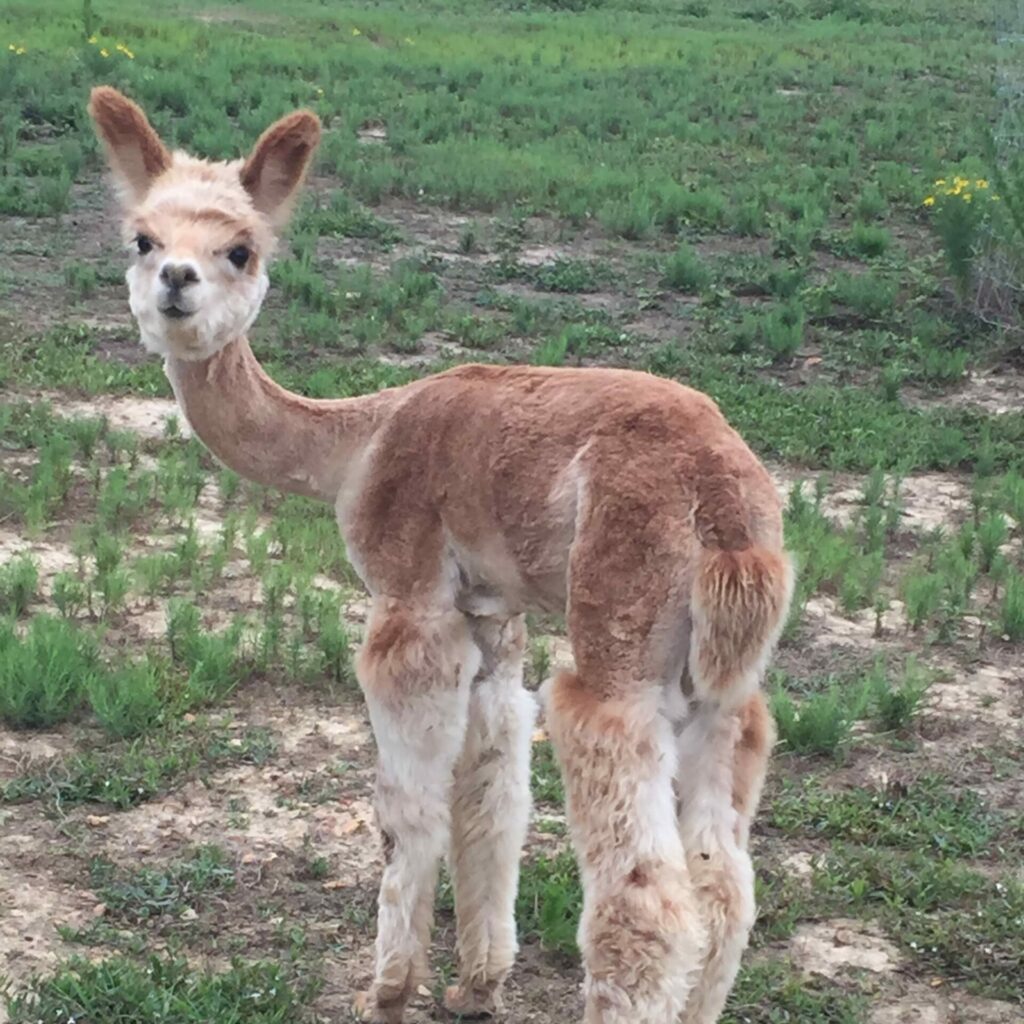
Alpacas only breed once a year to year and a half. Inducing is also tricky with alpacas; therefore, they should mate naturally. Female alpacas have a gestation period of anywhere from 242 to 345 days.
Alpacas only have one baby. After an average 7-hour labor, the momma alpaca delivers a cute and cuddly baby alpaca, called a cria. In general, the cria can weigh 18 to 20 lbs.
In the first 10-14 days of a crias’ life, they eat 10% of their body weight and feed every 4 hours, later decreasing feedings to 3-4 times a day. Crias won’t wean until they are 6 to 8 months, so females won’t reproduce again for generally 12 to 15 months making breeding a slow process in comparison to other farm animals. However, alpacas live a long life with good care living up to 20 years.
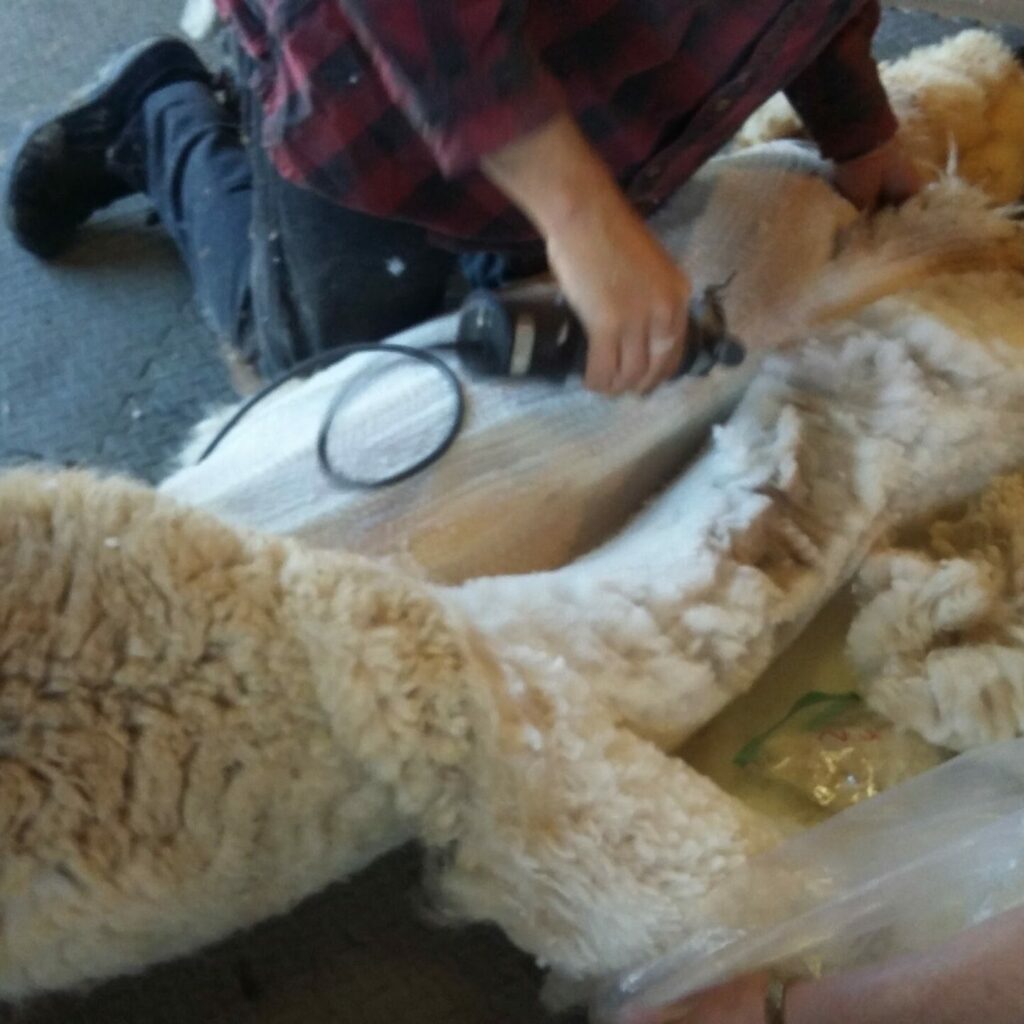
The alpacas are sheared once a year by professional shearers to help the animals rid five to ten pounds worth of fleece that would otherwise become heavy and hot during our hot summers. The shearing is done in the most humane way possible to avoid hurting the animals while getting prime-quality fiber in the process.
The alpaca blanket is the 1st quality fiber that is found along the alpaca’s sides and backs. The neck fibers are considered 2nd quality, and the leg and belly fibers are of 2nd and 3rd quality.
The fleece is now ready for skirting!
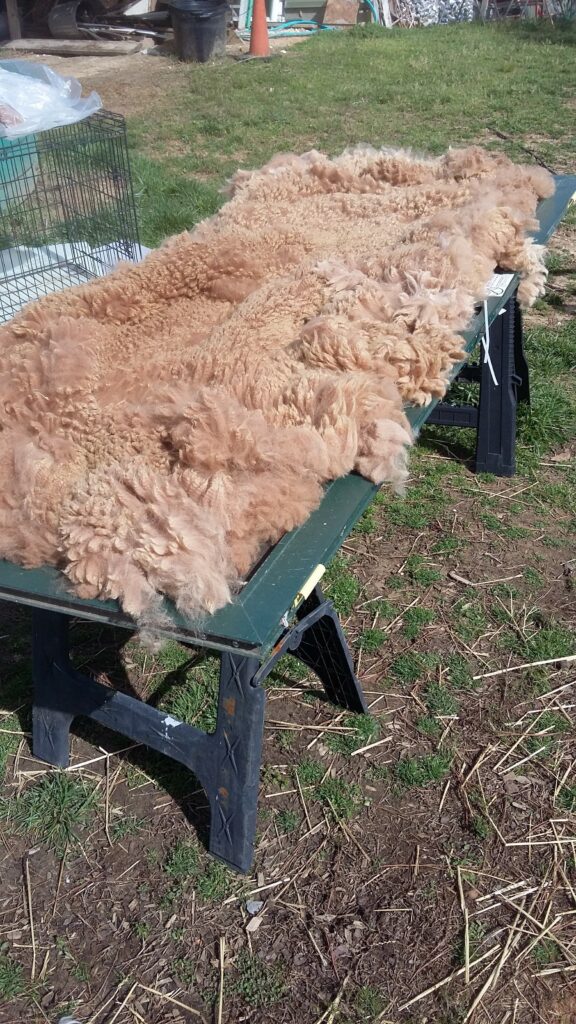
Skirting is removing the bad fibers from the good fleece to produce a better-quality material. This process helps get out larger pieces of hay, discoloration, and vegetable matter stuck in the fleece of the alpaca’s luxurious coat.
Once this process has been completed, it’s time for tumbling the material!
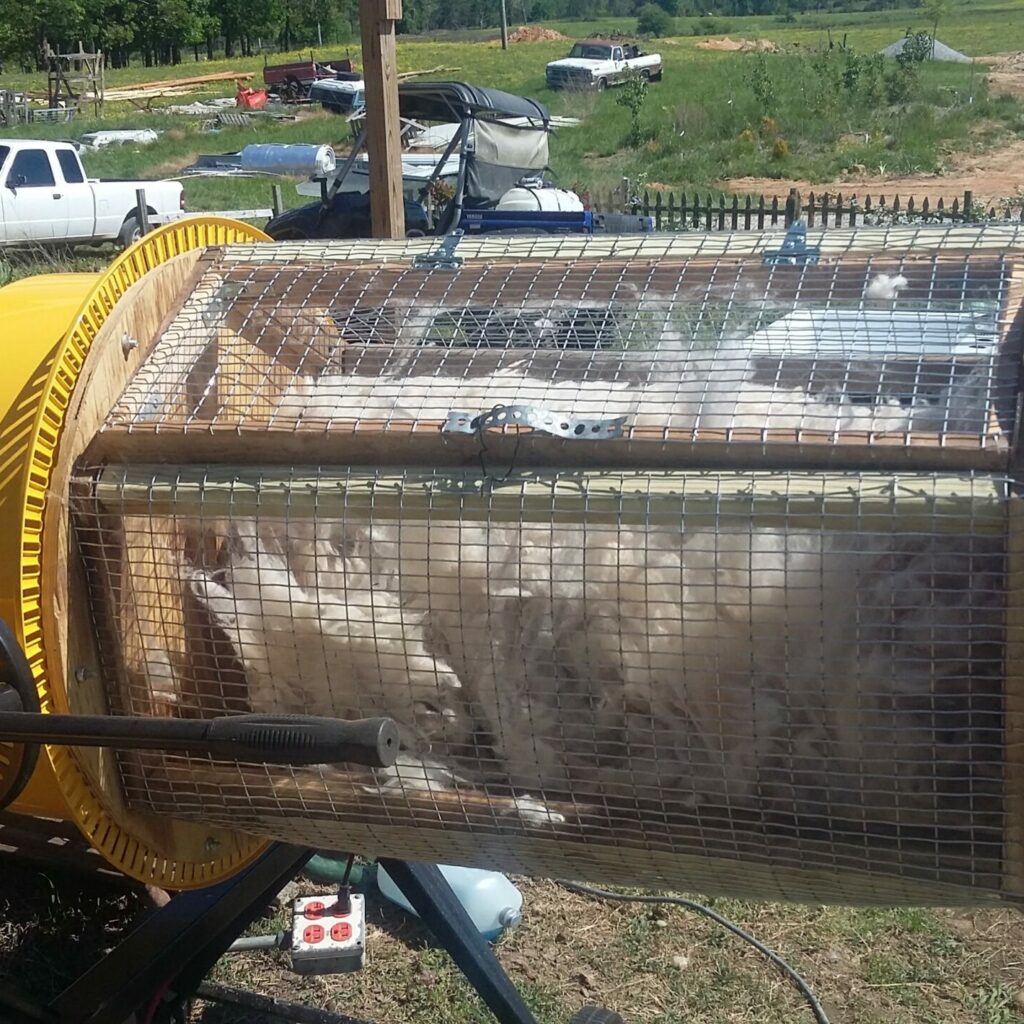
Tumbling is the process of getting the rest of the extra dirt, hay, and other vegetable matter missed during the fleece’s skirting. My dad helped me make this tumbler from a concrete mixer!
Once the tumbling process is complete, the alpaca fleece is ready for washing to give yet another level of cleanliness.
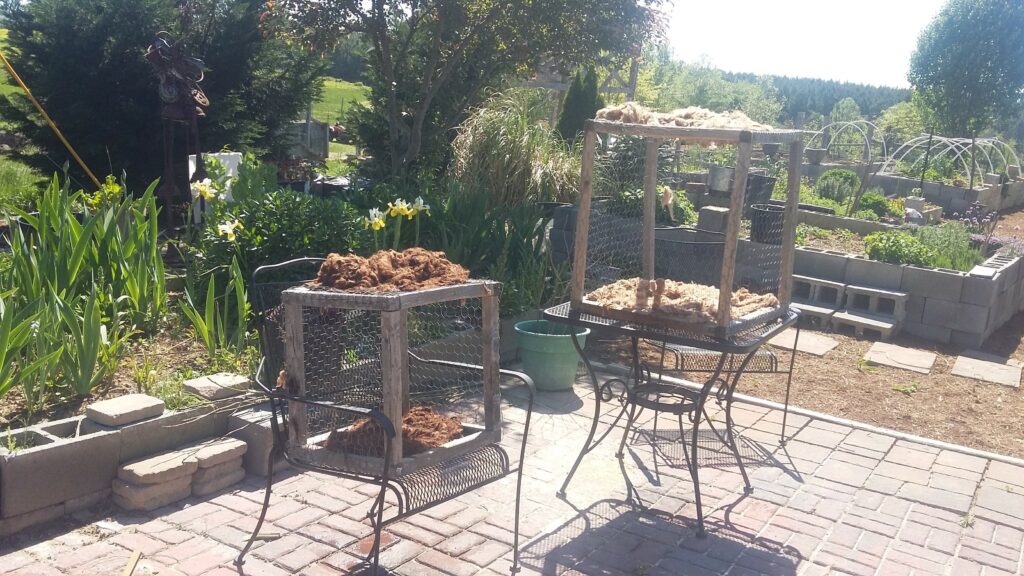
I wash all the fiber before spinning because alpacas love their dust baths! Each washing is several steps: rinse, soak, wash with soap, rinse, and repeat it. When the fiber is dried, it is ready for the next step in picking, carding, and combing the fleece. The alpaca blanket is the 1st quality fiber that is found along the alpaca’s sides and backs. The neck fibers are considered 2nd quality, and the leg and belly fibers are of 2nd and 3rd quality.
The fleece is now ready for carding!
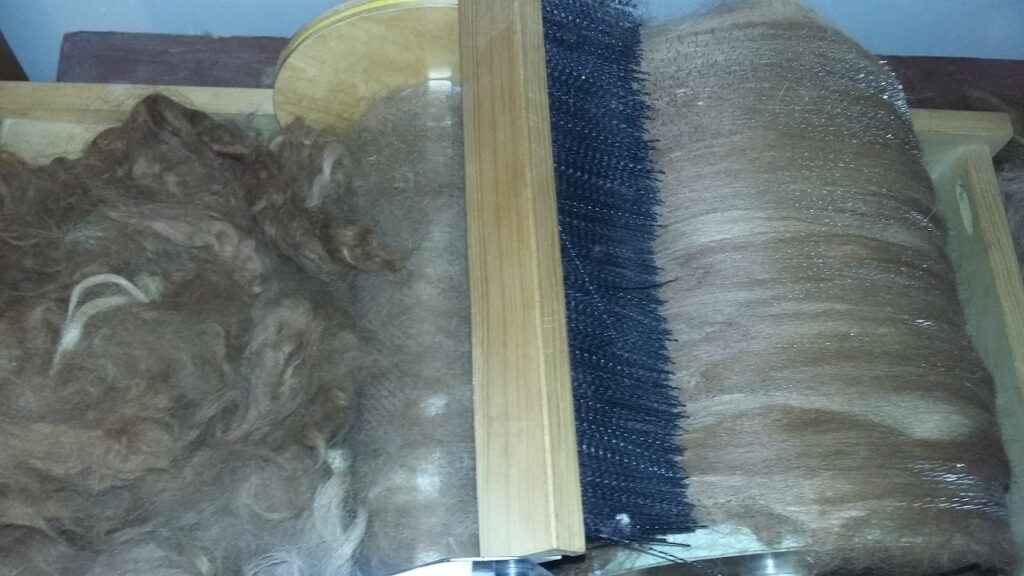
Most alpaca fiber I prefer to card on my drum carder, the equipment aligns the fibers and prepares them for the spinning process. The standard drum carder has two drums with small nails that brush out and straighten the fibers.
The process is also great for blending different materials. Other preparation methods include Picking and Combing as well. Primarily I card the fibers to ready them for the next step in the process, the spinning.
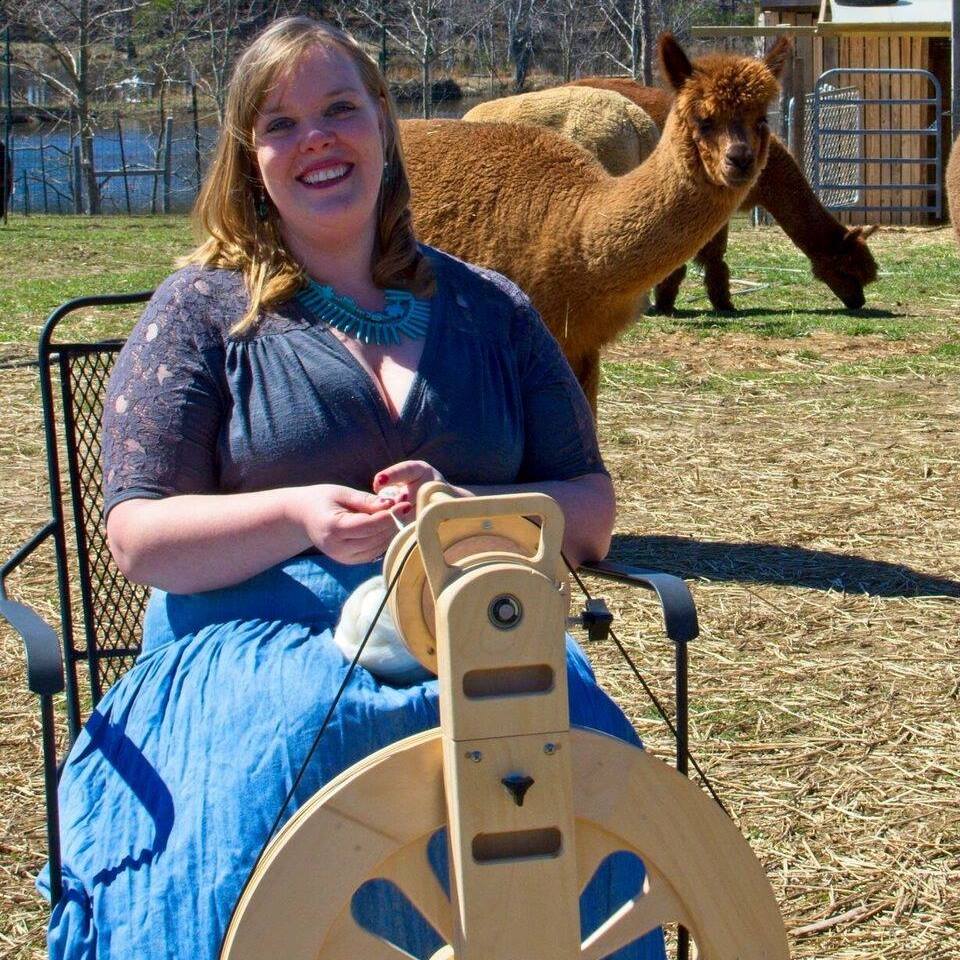
Once the fiber has been sheared, tumbled, washed, picked, and carded, it is ready for spinning! Spinning can be done on a drop spindle, spinning wheel, or you can ship the fibers to the mill for processing. I love to spin yarn on my Spinolution wheels!
Yarns, the finished product, can be used for weaving, knitting, crochet, or other textile arts and crafts projects; the yarns can be dyed to create lovely combinations of hand-processed and dyed, homespun yarns of alpaca.
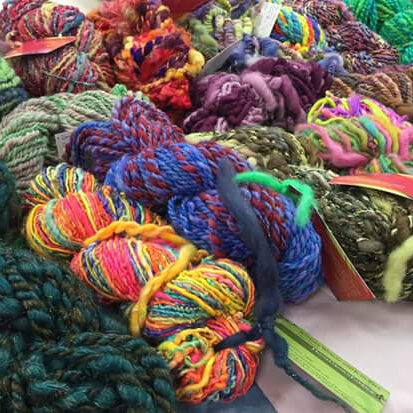
Generally, yarns tend to be dyed once they have been spun, although you can also dye alpaca fibers pre-spinning. Many people use food-based dyes, such as food coloring, Kool-Aid, and Easter egg color tablets are perfect and come in bright and vivid colors. To dye the alpaca yarn, you can also use chemical-based dyes and be aware that alpaca will slowly absorb the dye and therefore takes a little longer than other fibers.
The first step is to thoroughly soak the yarn in water and vinegar to set your dyes, so they do not wash out after dyeing. A buffet pan is perfect, or any pot large will work, giving you access to different parts of the skein to do multi colors or entire skeins of one color; Kool-Aid powder is perfect for creating speckled yarns as its powder. Place the dye tablet, powder, or food coloring on the areas you wish to color and let the water slowly come to a simmer, then turn off and leave it on the stove until the pot cools. When the yarn can be removed by hand, gently rinse the yarn with cold water. Allow the skeins to dry.
Once the skeins are completely dry, you will have a beautifully hand-dyed alpaca skein of yarn.
